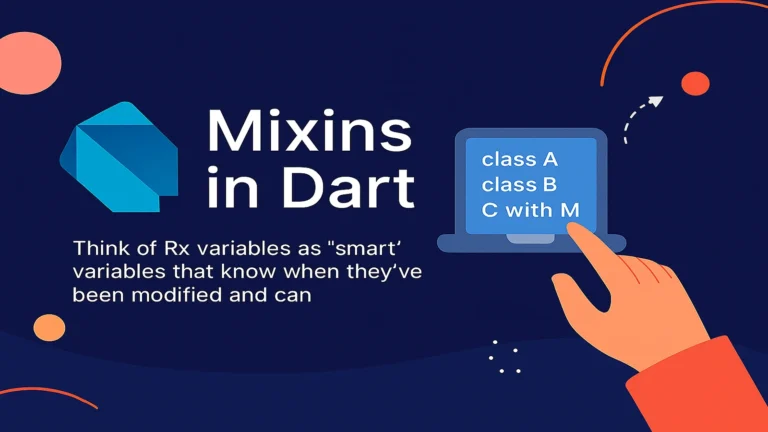
If you are diving into Flutter development, you have likely encountered the term BuildContext in almost every method you write. Understanding what is build context in Flutter and the reasons for every method having BuildContext is fundamental to learn Flutter app development. This comprehensive guide will simplify BuildContext, explain why it’s funtions in Flutter code, and help you understand it effectively in your applications.
What is Build Context in Flutter?
BuildContext is a fundamental concept in Flutter that represents a handle to the location of a widget in the widget tree. Think of build context in Flutter as a reference point that tells a widget where it exists within the overall structure of your application. Every widget in Flutter has an associated BuildContext, which is passed to the build method and many other methods throughout the framework.
In technical terms, BuildContext is an abstract class that provides access to the widget’s position in the tree and allows widgets to communicate with their ancestors. When you see BuildContext context as a parameter, you are receiving a reference to the specific location in the widget tree where that widget lives.
The Anatomy of BuildContext in Flutter
To truly understand what is build context in Flutter, let’s break down its core characteristics:
1. Tree Position Identifier
BuildContext identifies where a widget sits in the widget tree hierarchy. This positional information is crucial because Flutter’s entire UI is built as a tree of widgets, where each widget can have parents, children, and siblings.
2. Access Point to Inherited Data
One of the primary reasons for every method having BuildContext is that it provides access to InheritedWidgets higher up in the tree. This includes accessing Theme data, MediaQuery information, Navigator, and other inherited properties.
3. Widget Lifecycle Connector
BuildContext connects widgets to Flutter’s lifecycle mechanisms, enabling proper rebuilding and state management throughout your application.
Reasons For Every Method Having BuildContext
Now let’s explore the comprehensive reasons for every method having BuildContext in Flutter:
Reason 1: Accessing Theme and Styling Information
Widget build(BuildContext context) {
// BuildContext allows access to theme data
final theme = Theme.of(context);
final primaryColor = theme.primaryColor;
return Container(
color: primaryColor,
child: Text(
'Styled with Theme',
style: theme.textTheme.headlineMedium,
),
);
}
The build context in Flutter enables widgets to access styling information defined at higher levels of the widget tree, ensuring consistent design throughout your app.
Reason 2: Navigation Between Screens
void navigateToNextScreen(BuildContext context) {
Navigator.push(
context,
MaterialPageRoute(builder: (context) => NextScreen()),
);
}
Navigation in Flutter requires BuildContext to understand the current position in the navigation stack and perform proper screen transitions.
Reason 3: Displaying Dialogs and Snackbars
void showMessage(BuildContext context) {
ScaffoldMessenger.of(context).showSnackBar(
SnackBar(content: Text('BuildContext enables this!')),
);
}
To display overlays, dialogs, or snackbars, Flutter needs the BuildContext to find the appropriate Scaffold or MaterialApp ancestor.
Reason 4: Accessing MediaQuery for Responsive Design
Widget build(BuildContext context) {
final screenSize = MediaQuery.of(context).size;
final isLargeScreen = screenSize.width > 600;
return Container(
width: isLargeScreen ? 400 : screenSize.width,
child: Text('Responsive Layout'),
);
}
Understanding screen dimensions, orientation, and device characteristics requires BuildContext to access MediaQuery data.
Reason 5: State Management and Provider Pattern
Widget build(BuildContext context) {
final userProvider = Provider.of<UserProvider>(context);
return Text('Welcome, ${userProvider.userName}');
}
Modern state management solutions heavily rely on BuildContext to propagate state changes through the widget tree efficiently.
Reason 6: Localization and Internationalization
Widget build(BuildContext context) {
final localizations = AppLocalizations.of(context);
return Text(localizations.welcomeMessage);
}
Accessing localized strings requires BuildContext to find the appropriate Localizations widget in the ancestor tree.
Reason 7: Finding Ancestor Widgets
Widget build(BuildContext context) {
final scaffold = Scaffold.of(context);
final ancestorState = context.findAncestorStateOfType<MyCustomState>();
return Container();
}
BuildContext provides methods to traverse up the widget tree and find specific ancestor widgets or their states.
Common BuildContext Pitfalls and Solutions
Pitfall 1: Using BuildContext After Widget Disposal
// ❌ Wrong - BuildContext used after async operation
void loadData(BuildContext context) async {
await Future.delayed(Duration(seconds: 2));
Navigator.pop(context); // Context might be invalid here
}
// ✅ Correct - Check if widget is still mounted
void loadData(BuildContext context) async {
await Future.delayed(Duration(seconds: 2));
if (context.mounted) {
Navigator.pop(context);
}
}
Pitfall 2: Wrong BuildContext Scope
// ❌ Wrong - Using outer context
Widget build(BuildContext context) {
return Scaffold(
body: Center(
child: ElevatedButton(
onPressed: () {
Scaffold.of(context).showSnackBar(/* ... */); // Error!
},
child: Text('Show Snackbar'),
),
),
);
}
// ✅ Correct - Using Builder to get correct context
Widget build(BuildContext context) {
return Scaffold(
body: Center(
child: Builder(
builder: (BuildContext scaffoldContext) {
return ElevatedButton(
onPressed: () {
ScaffoldMessenger.of(scaffoldContext).showSnackBar(/* ... */);
},
child: Text('Show Snackbar'),
);
},
),
),
);
}
Advanced BuildContext Concepts
BuildContext and InheritedWidget
The relationship between BuildContext and InheritedWidget is central to understanding what is build context in Flutter:
class MyInheritedWidget extends InheritedWidget {
final String data;
MyInheritedWidget({
required this.data,
required Widget child,
}) : super(child: child);
static MyInheritedWidget? of(BuildContext context) {
return context.dependOnInheritedWidgetOfExactType<MyInheritedWidget>();
}
@override
bool updateShouldNotify(MyInheritedWidget oldWidget) {
return data != oldWidget.data;
}
}
BuildContext in StatefulWidgets
In StatefulWidgets, the BuildContext is available in the State object and remains consistent across rebuilds:
class MyStatefulWidget extends StatefulWidget {
@override
State<MyStatefulWidget> createState() => _MyStatefulWidgetState();
}
class _MyStatefulWidgetState extends State<MyStatefulWidget> {
@override
Widget build(BuildContext context) {
// This context is stable and tied to this State object
final theme = Theme.of(context);
return Container();
}
void someMethod() {
// You can use 'context' in any State method
Navigator.push(context, /* ... */);
}
}
Best Practices for Working with BuildContext
- Always Pass BuildContext as Parameter: Don’t store BuildContext in variables or class fields, as it may become invalid.
- Use Builder Widgets When Needed: When you need a fresh context that’s a child of a specific widget, use Builder.
- Check mounted Property: In async operations, always verify the context is still valid before using it.
- Understand Context Scope: Be aware of which context you’re using, especially in nested widget structures.
- Leverage Extension Methods: Create extension methods on BuildContext for cleaner, more reusable code:
extension BuildContextExtensions on BuildContext {
void showErrorSnackbar(String message) {
ScaffoldMessenger.of(this).showSnackBar(
SnackBar(content: Text(message), backgroundColor: Colors.red),
);
}
double get screenWidth => MediaQuery.of(this).size.width;
}
BuildContext in Different Flutter Patterns
BuildContext with BLoC Pattern
Widget build(BuildContext context) {
return BlocBuilder<CounterBloc, CounterState>(
builder: (context, state) {
return Text('Count: ${state.count}');
},
);
}
BuildContext with GetX
Widget build(BuildContext context) {
return GetBuilder<UserController>(
builder: (controller) {
return Text('User: ${controller.name}');
},
);
}
Performance Considerations with BuildContext
Understanding what is build context in Flutter includes knowing its performance implications. Using of(context) methods creates dependencies that trigger rebuilds:
// Creates rebuild dependency
final theme = Theme.of(context);
// Doesn't create dependency - use when you don't need rebuilds
final theme = Theme.of(context, listen: false);
Conclusion
Understanding what is build context in Flutter and the reasons for every method having BuildContext is essential for Flutter development. BuildContext serves as the connective tissue of your Flutter application, enabling widgets to communicate, access shared data, navigate between screens, and maintain proper positioning in the widget tree.
The reasons for every method having BuildContext boil down to Flutter’s architectural design: the framework needs this positional information to efficiently manage the widget tree, propagate updates, and provide access to inherited data. By mastering BuildContext, you’ll write cleaner, more efficient Flutter code and better understand how the framework operates under the hood.
Whether you’re a beginner just starting with Flutter or an advanced developer optimizing performance, a solid grasp of build context in Flutter will elevate your development skills and help you build better applications. Remember to follow best practices, avoid common pitfalls, and leverage BuildContext’s power to create responsive, well-structured Flutter apps.
Key Takeaways:
- BuildContext represents a widget’s location in the widget tree
- It provides access to inherited data, theme information, and navigation
- Every method needs BuildContext to interact with the Flutter framework properly
- Understanding context scope and lifecycle is crucial for bug-free apps
- BuildContext is the foundation of Flutter’s reactive architecture






